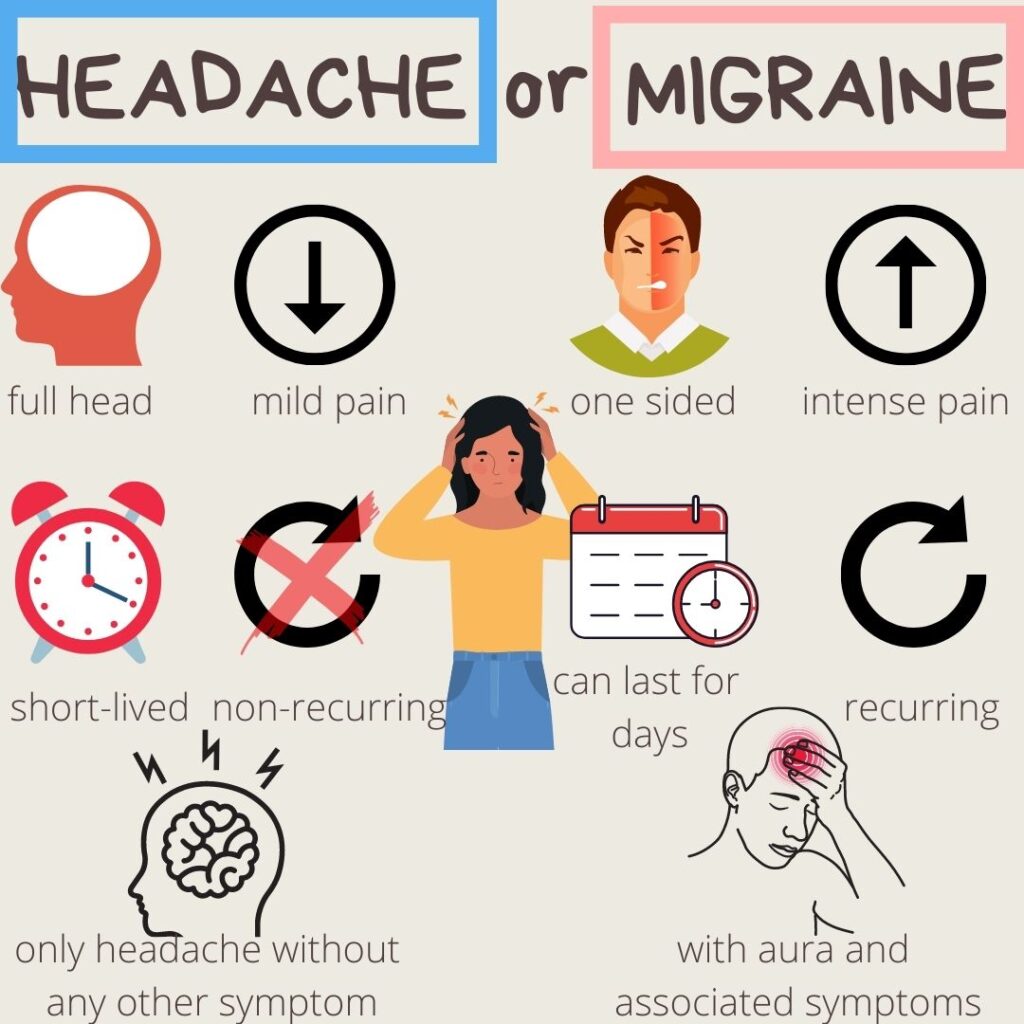
Are you a healthcare professional looking to improve your skills in diagnosing and treating headaches and migraines? Or are you a patient struggling to understand the difference between these two conditions? Either way, this article is for you. In this piece, we’ll take a clinical approach to accurate diagnosis, exploring the latest research and diagnostic criteria to help you better understand and manage headaches and migraines.
First, let’s start with the basics. Headaches and migraines are two of the most common neurological disorders worldwide, affecting millions of people every day. But despite their prevalence, they remain poorly understood, and misdiagnosis is common. So, how can we improve our diagnostic skills and provide better care for our patients?
The first step is to understand the differences between headaches and migraines. Headaches are a type of pain that occurs in the head or neck region, while migraines are a neurological disorder characterized by intense, debilitating headaches, often accompanied by sensitivity to light and sound, nausea, and vomiting. But here’s the thing: migraines can also present as headaches, making diagnosis tricky.
So, how do we diagnose headaches and migraines? The first step is to take a thorough medical history and perform a physical examination. We need to ask the right questions, such as: What’s the location and severity of the pain? How long does it last? Are there any triggers or relieving factors? Are there any associated symptoms like nausea or sensitivity to light?
Next, we need to consider the diagnostic criteria for headaches and migraines. The International Classification of Headache Disorders (ICHD) provides guidelines for diagnosing headaches and migraines, including:
- Migraine: Five headaches lasting 4-72 hours with two of these: light/sound sensitivity, nausea, vomiting, or smell sensitivity.
- Tension headache: Ten headaches lasting 30 minutes to 7 days with two of: bilateral, pressing, mild/moderate, or worse with activity.
But diagnosis isn’t just about checking boxes; it’s also about considering the patient’s overall clinical picture. We must rule out conditions mimicking headaches, like sinusitis, TMJ disorder, or subarachnoid hemorrhage.
READ ALSO
- 7 Hidden Facts About the Human Body
- How Sleep Deprivation Wreaks Havoc on Your Body
- See the Benefit of Fruits to your Health
Once we’ve made a diagnosis, the next step is to develop a treatment plan. For headaches, this may include over-the-counter pain relievers like acetaminophen or ibuprofen, while migraines may require prescription medications like triptans or ergots. But treatment isn’t just about medication; it’s also about lifestyle modifications like stress management, sleep hygiene, and avoiding triggers like certain foods or environmental stimuli.
Conclusion
Diagnosing headaches and migraines requires a clinical approach that considers the patient’s medical history, physical examination, and diagnostic criteria. By improving our diagnostic skills and providing better care, we can improve patient outcomes and reduce the burden of these debilitating conditions.
FAQs
What’s the difference between a headache and a migraine?
A headache is pain in the head or neck, while a migraine is a severe, neurological headache often with light/sound sensitivity, nausea, and vomiting.
How do I know if I have a migraine or a headache?
If you have severe headaches with light/sound sensitivity, nausea, and vomiting, it might be a migraine. But only a healthcare professional can provide an accurate diagnosis.
What are the diagnostic criteria for migraines?
The ICHD provides guidelines for diagnosing migraines, including at least five attacks of headache lasting 4-72 hours, with at least two of the following symptoms: sensitivity to light, sensitivity to sound, nausea, vomiting, or sensitivity to smells.
How do I treat a headache or migraine?
Treatment varies by diagnosis but may include OTC pain relievers like acetaminophen or ibuprofen for headaches, and prescription meds like triptans or ergots for migraines. Lifestyle modifications like stress management, sleep hygiene, and avoiding triggers may also be helpful.
Can I prevent headaches and migraines?
Yes, by identifying and avoiding triggers, practicing stress management and sleep hygiene, and maintaining a healthy lifestyle, you can reduce your risk of developing headaches and migraines.
READ ALSO
- Dehydration: Signs of Dehydration
- See the Benefit of Fruits to your Health
- Tingling Toes? Feeling Weak? Unable to Walk? – Guillain-Barré Syndrome


